Drescher is well-known to many readers of Design Observer. As an illustrator, his work has been published in top newspapers, magazines and journals throughout the world, including Rolling Stone, Time, The New York Times, and many more.
Born in Copenhagen in 1955, Henrik immigrated with his family to the United States in 1967. His mother, 79, is an artist and returned to Denmark some time ago to live and work.
In a recent interview with Henrik, I learned that he started drawing for publications at the age of 20. Though he enrolled at the Museum School in Boston, he dropped out after only one semester to pursue illustration. While Drescher says "no one is entirely self-taught,” he really had no formal training. Seven years after leaving the museum school, he moved to NYC where, according to the artist, he proceeded to get quite a bit of work.
John Foster: “Henrik, I am going to start with something I have asked many artists in the past: who would you say were the biggest influencers to your work and style?”
Henrik Drescher: “That would be Alan Cober, Brad Holland, Milton Glaser, and Leonard Baskin for the commercial work. But for my fine art, Jim Dine, Robert Rauschenberg, Heinrich Kley, Horst Janssen, and many so-called outsider artists.”
JF: “Outsider artists? Hmmm, like who?”
HD: “There’s Howard Finster, Adolf Wölfli... actually I've forgotten many of the names, but I was studying all the non-academic art I could lay my eyes on — including weird signage and Jehovah’s Witness drawings and Hare Krishna art… and let’s not forget Henry Darger! I almost bought one of his works years ago for a very low price — but I was stupid.
JF: (grin) “We have all missed opportunities like that. Don’t feel bad.”
HD: “Wait — there’s Bill Traylor! And, the entire Prinzhorn Collection!”
JF: “You live with your wife, the artist Wu Wing Yee, in Dali, Yunnan Province, China. Has the environment there influenced your work?”
HD: “Dali lies between mountains and big lake, and it is under lots of (social and political) pressure, like the rest of China — from development, pollution... and a loss of values in general.”
JF: “But still, I see visual influences in your big paintings…”
HD: “No question. The mountain paintings are a riff on Chinese ink landscapes. I've lived in many places in the world and this is the first time that I’ve been motivated to paint about a place.”
JF: “The varied quality of your line work, which is just so lush at times, can be craggy one moment and ‘nervous’ at other times. Do you draw with unusual objects, like sticks and things to get this effect?”
HD: “The paintings are just brush work. When I make smaller drawings, I use pens. No sticks.”
JF: “I have asked you before about the balance of fine art work and illustration... if you pursue galleries and museum shows. Your answer was that you ‘live on a different planet... where galleries and shows do not matter to you so much.’ I thought that was a refreshing comment.”
HD: “I said that? OK. Well, I suppose that means that I just do my work and don‘t think about the definitions much anymore. I’ve always made things that were NOT commercial. In fact — most of what I’ve done probably would fall into the fine art category... it‘s just that people see my published work and assume that this is my main interest. In actuality, it‘s reversed. I work on my stuff and it spills into the illustration work.
And yea, galleries and shows don‘t matter much. I have a problem with selling, although it’s necessary. I don‘t like to part with my pictures. To me, they belong together... like a book or frames from a film.”
JF: “Interesting answer, Henrik. Before we wrap up, I’d like to ask you about your Nervenet installation piece. It’s pretty spectacular.”
HD: “Nervenet is like a notebook installation, a thought diagram. It continues to grow. Today, it‘s 8 times larger than you see in these pictures. If I mounted it again, it would be different. And it’s very time-consuming to install.”
“Nervenet has been shown in several places. It’s comprised of images that I have generated over the past 10+ years, mounted on pieces of wire that I‘ve picked up on my travels. It’s a kind of encyclopedia of everything... fragments of ideas and memories. Disassembled though, it is very compressed, in boxes.”
JF: “I am waiting to see which institution or museum steps up to install it in the United States. It is magnificent, and though I have not seen it in person, I can feel the power of this piece.”
“Thanks so much for your time today Henrik. I consider you to be a very important fine artist.”
HD: “Thank you John.”
To learn more about Henrik Drescher or to see more of his work, please check out his Tumblr site, or his website, here.

Henrik Drescher and his wife, the artist Wu Wing Yee, in his studio.
Dali City, Yunnan Province, China
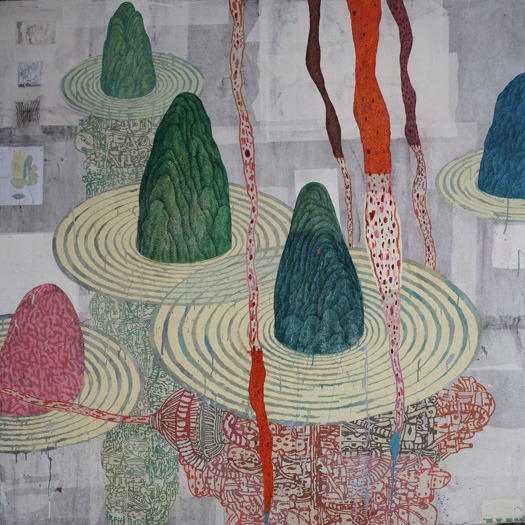
Mountain Machinery Series, painting 1
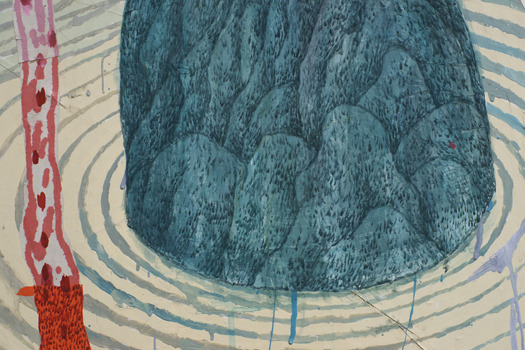
Detail, Mountain Machinery 1
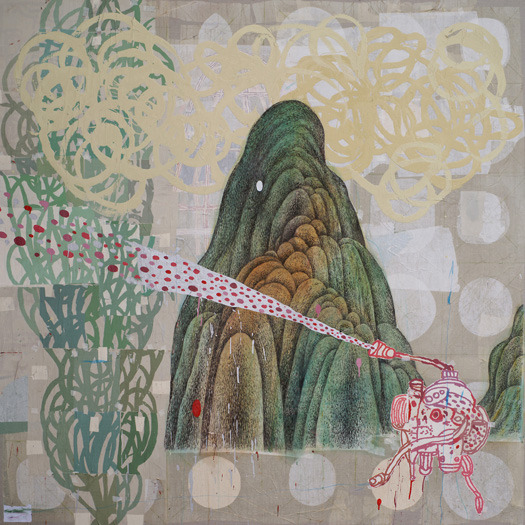
Mountain Machinery Series, painting 4
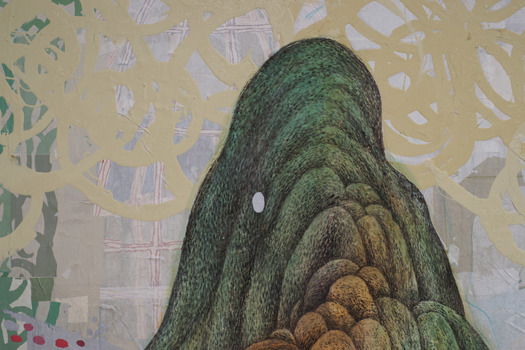
Detail, Mountain Machinery 4
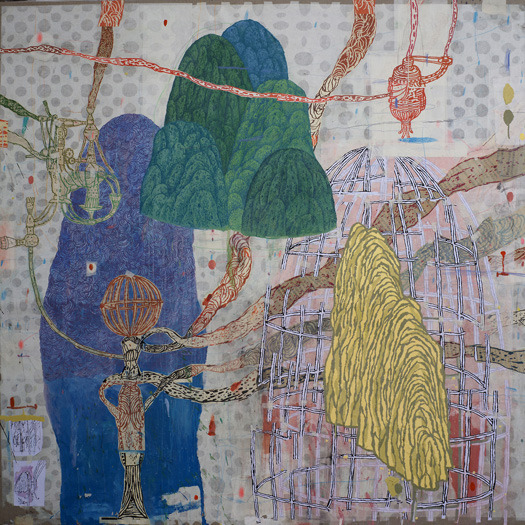
Mountain Machinery Series, painting 2
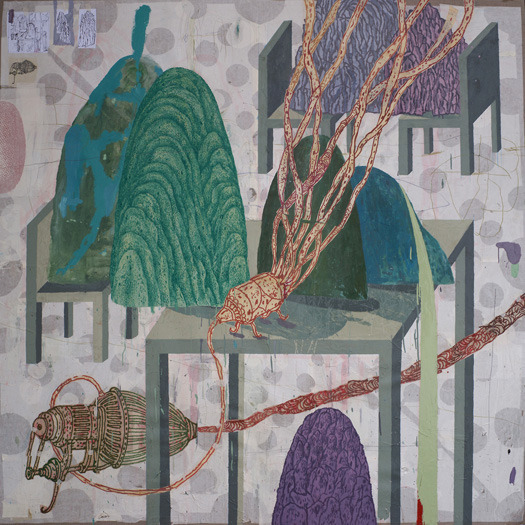
Mountain Machinery Series, painting 3
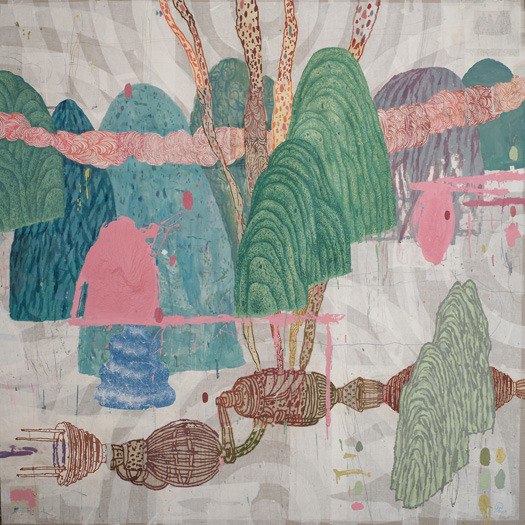
Mountain Machinery Series, painting 5
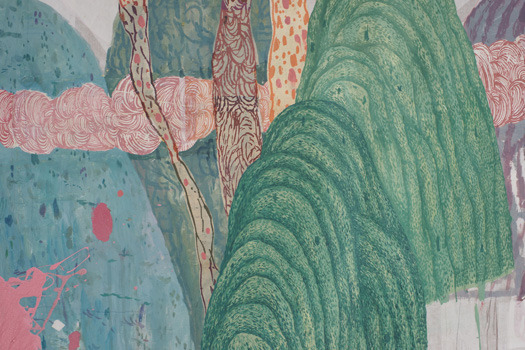
Detail, Mountain Machinery 5
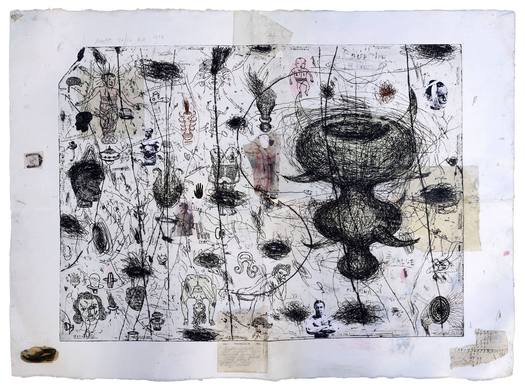
Henrik Drescher
Family Values, 1992
Master printer - Kevin Garber
Intaglio with collage elements and hand coloring
Paper unknown
22" h x 50" w
Ed. 6
At fifty inches wide, this print is quite large by traditional print standards. In addition, rather than making a conventional etching, Drescher experimented by incorporating coffee stains, holes in the paper, and collaged elements that included images from commercial publications or handwritten notes. The work was a diptych backed with red Japanese paper. Work developed at Island Press, St. Louis, MO.
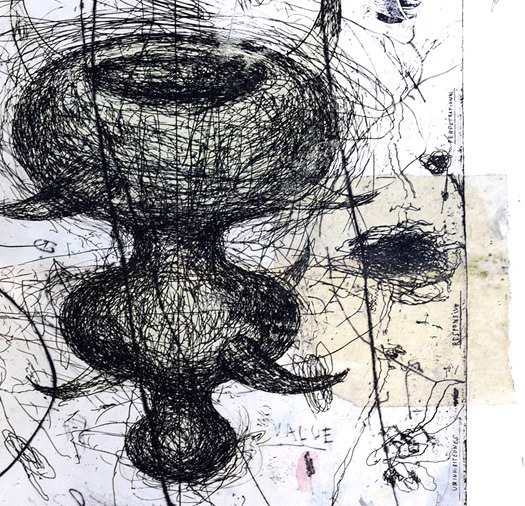
Detail, Family Values, 1992
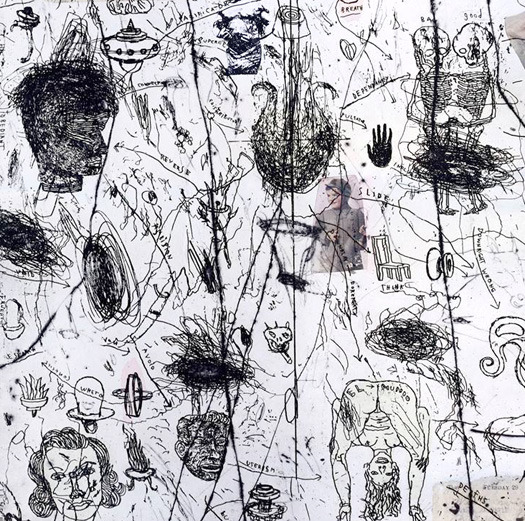
Detail, Family Values, 1992

Henrik Drescher
Nervenet, installation
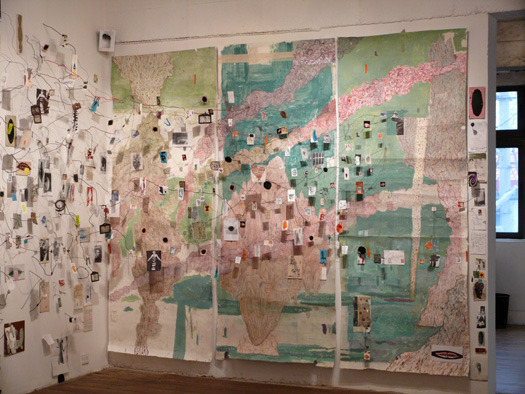
Henrik Drescher
Detail, Nervenet
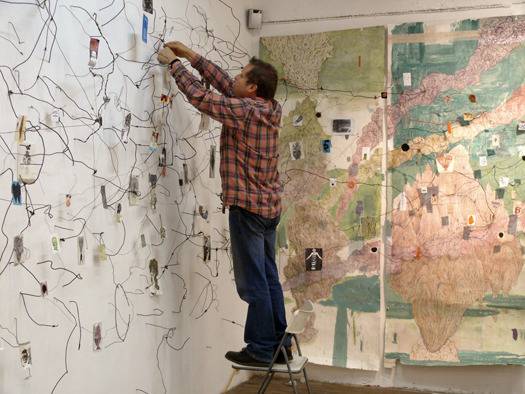
Henrik Drescher
The artist installing Nervenet
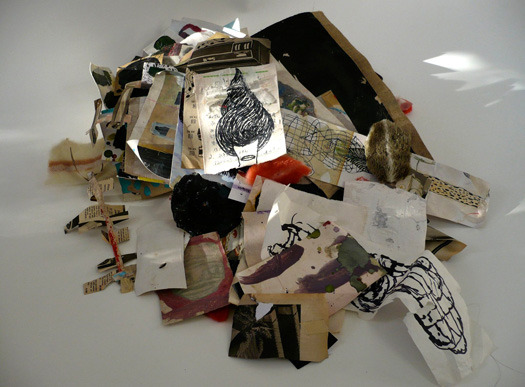
Henrik Drescher
Nervenet, de-installed paper portion

Henrik Drescher
Nervenet, de-installed wire portion
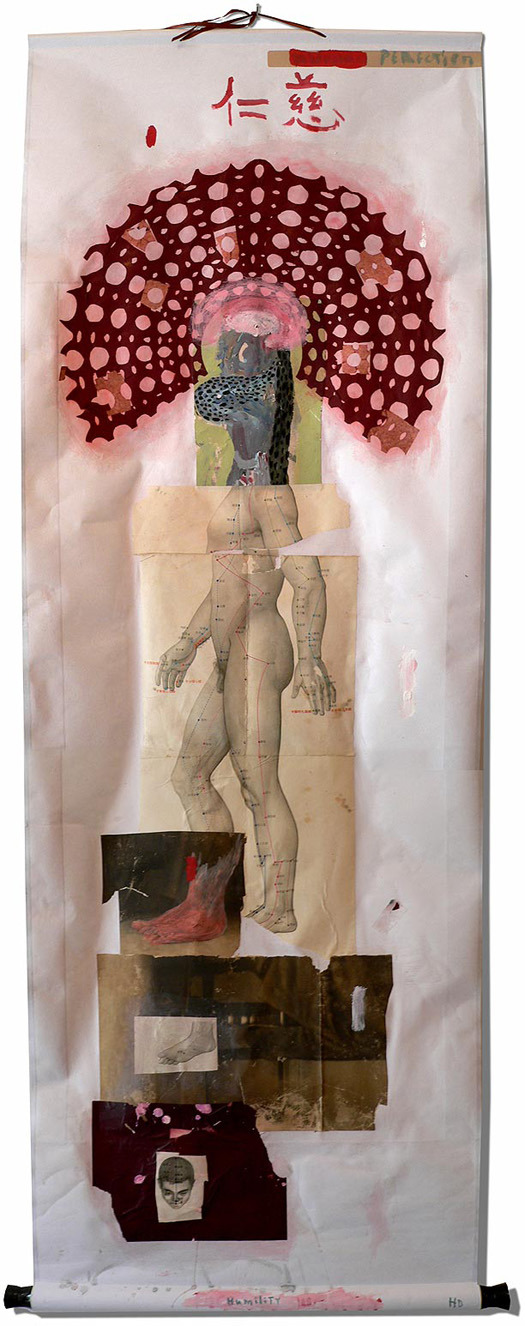
Henrik Drescher
Recent painting
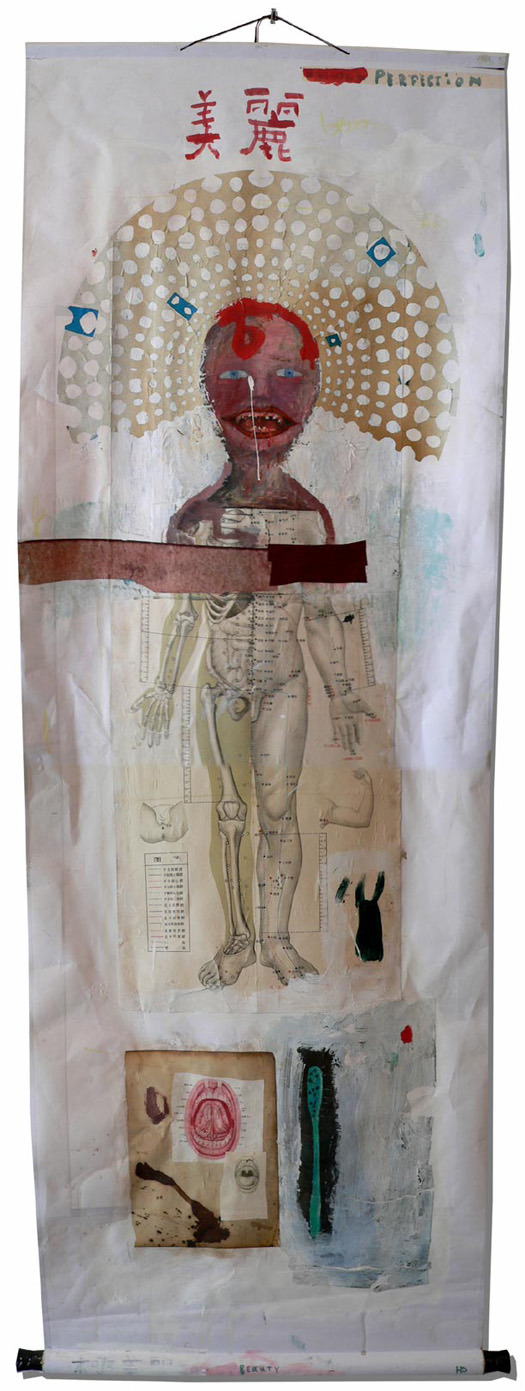
Henrik Drescher
Recent painting

Henrik Drescher
Recent painting
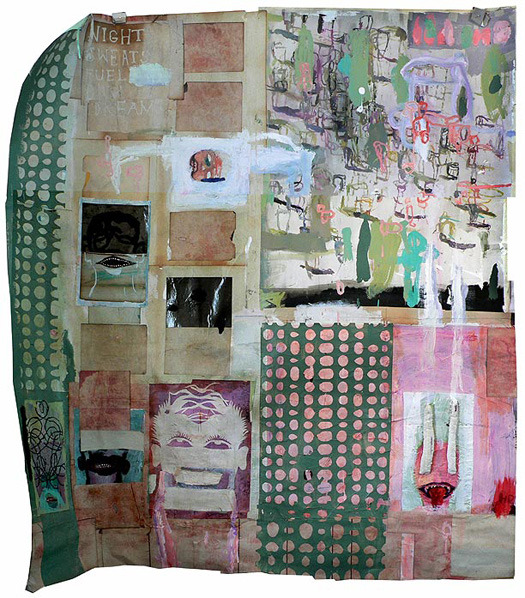
Henrik Drescher
Drunks (series)
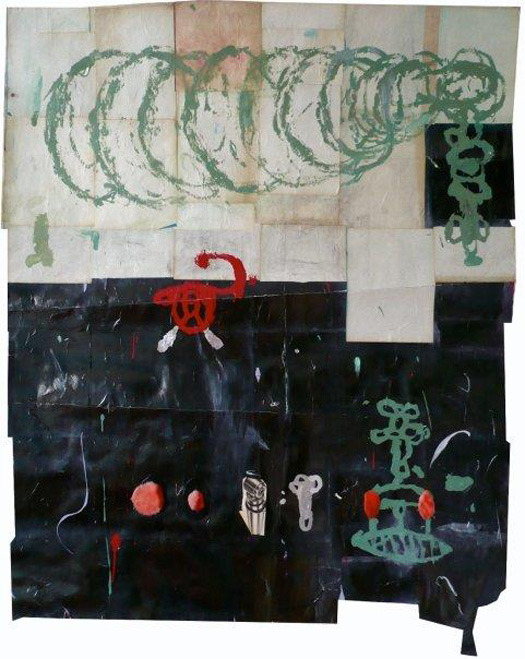
Henrik Drescher
Drunks (series)
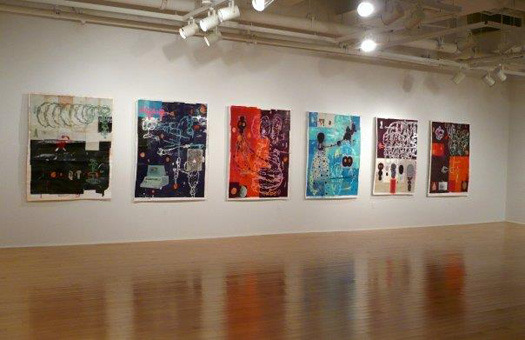
Henrik Drescher
Installation view of Drunks (series)

Henrik Drescher
Turbulence (series)
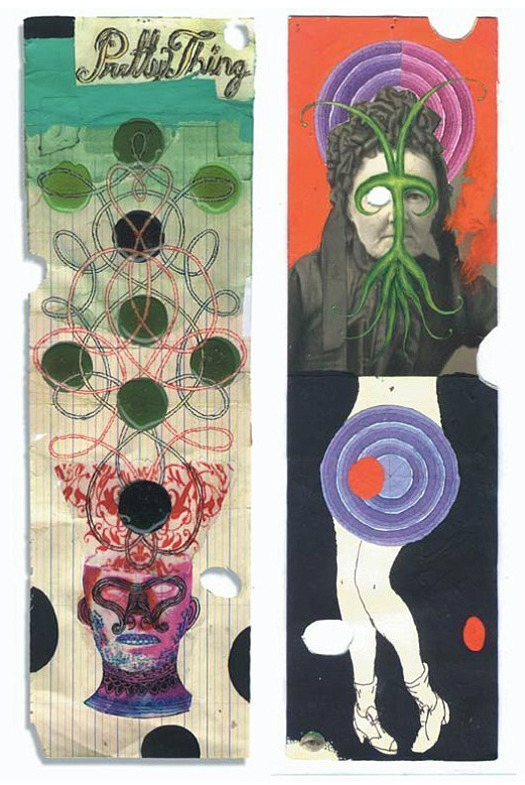
Henrik Drescher
Turbulence (series)
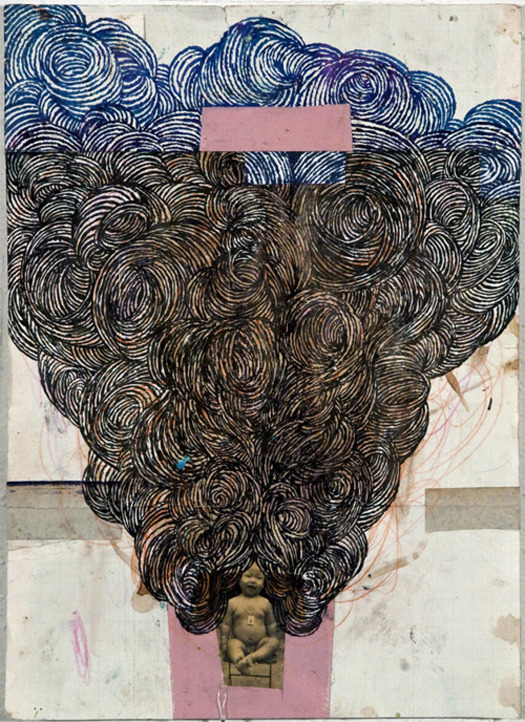
Henrik Drescher
Radiators (series)
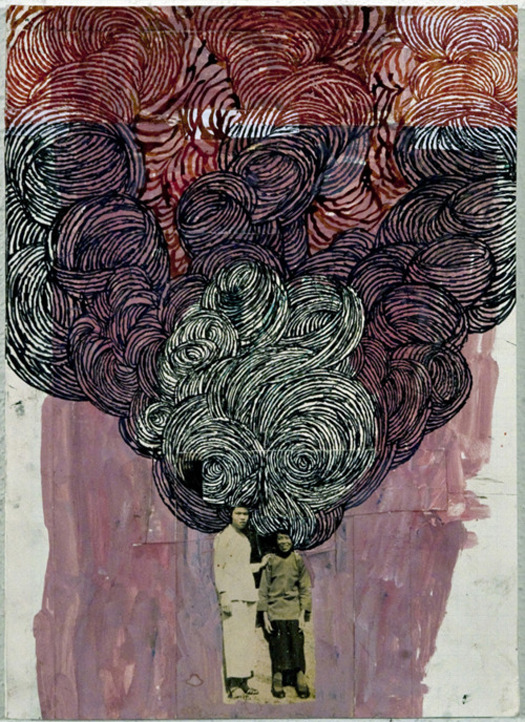
Henrik Drescher
Radiators (series)

Henrik Drescher
Too Much Bliss (series)
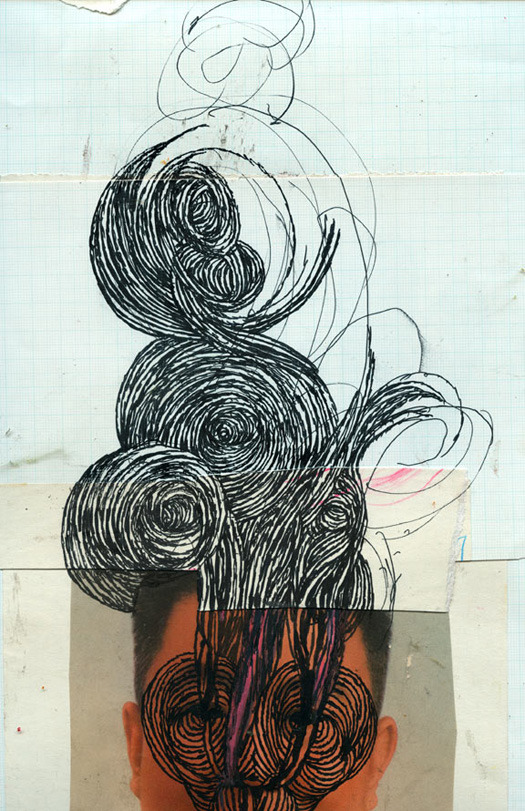
Henrik Drescher
Untitled drawing/collage
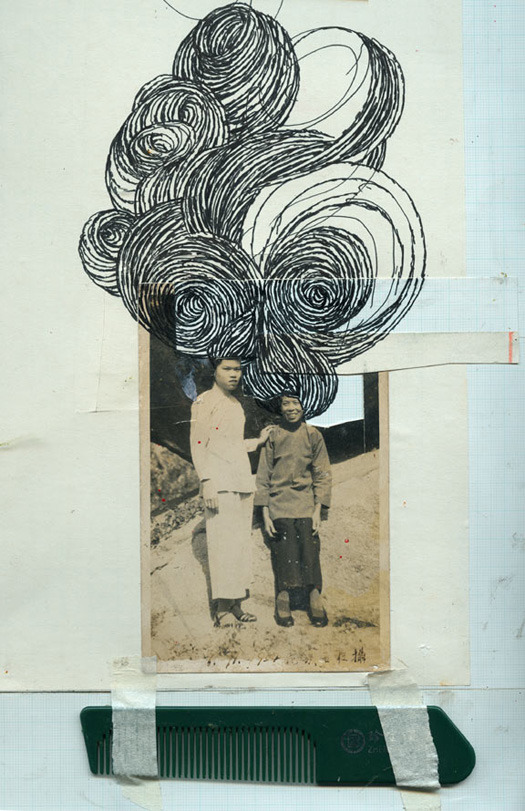
Henrik Drescher
Untitled drawing/collage
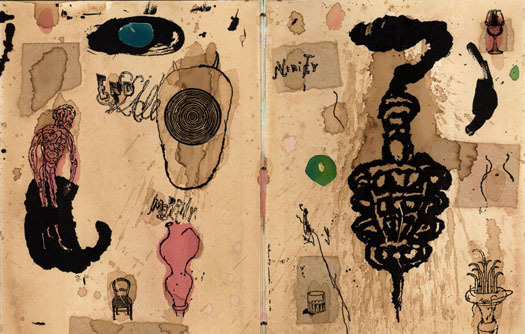
Henrik Drescher
Too Much Bliss (series)
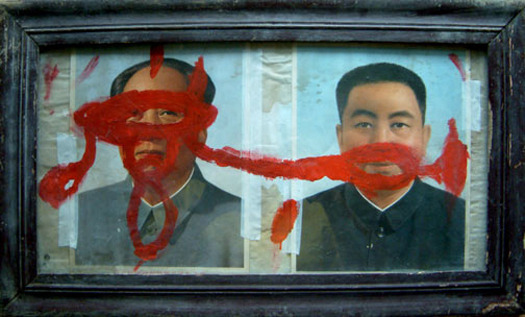
Henrik Drescher
Untitled
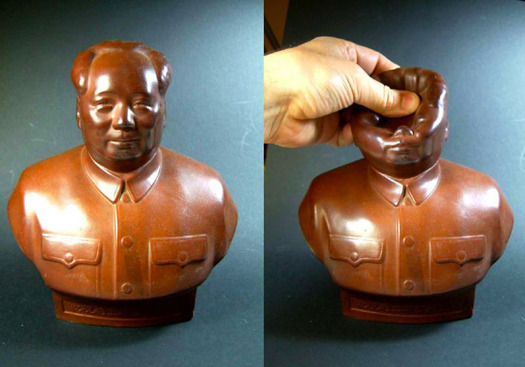
Henrik Drescher
Untitled
